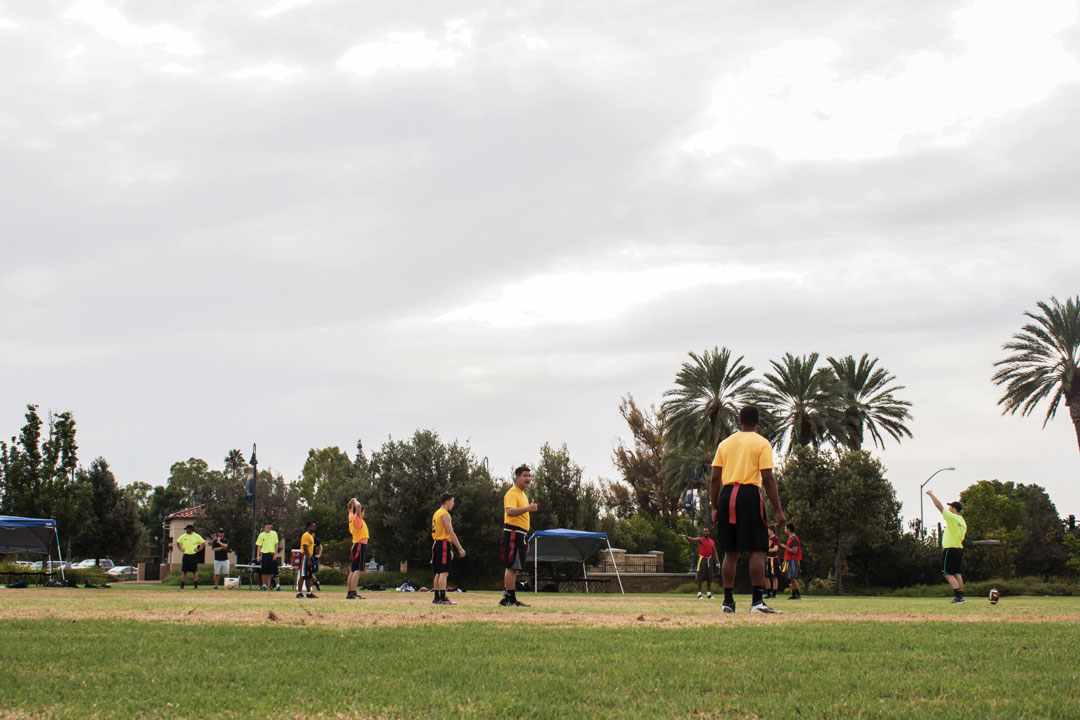
Randy Plavajka | Banner Intramural football games continue despite the possibility of heavy rain and thunderstorms.
Southern California has been experiencing record-breaking heat waves and an increase in rainstorms in recent months due to effects caused by El Niño, an irregularly occurring series of climate changes.
“El Niño is characterized by a warming of the central and eastern tropical Pacific sea surface temperatures, commonly referred to as SSTs,” said Dr. Robert Allen, assistant professor of climatology at the University of California, Riverside. “The warming and cooling of the SSTs affects atmospheric circulation, which effects precipitation patterns. In Southern California, it generally brings wetter conditions, particularly during winter.”
Allen noted this region of Southern California will likely get above average rainfall totals this winter, which will be a positive considering the four-year-long drought in California.
“On the downside, however, if we do get above normal rain this winter, that could lead to an increase in the frequency of occurrence of several natural disasters, such as mud slides, land slides and flash flooding,” Allen said.
“I do not like the heat at all because I am originally from Michigan so it’s always been cold out there, even in the summertime,” said Nathaniel Rotondo, junior accounting major..
Rotondo said he enjoys the rain and being able to wear sweatshirts because it reminds him of the Midwest.
Kristen McElroy, senior communication disorders major and long-time Southern California resident, has taken note of the record-breaking heat.
“People on campus are always complaining about the heat,” McElroy said. “I am looking forward to sweater weather.”
The climate oscillation occurs between every three to seven years and is not expected to make a return to Southern California for an average of another five years, says Allen, meaning next year’s fall season may actually call for sweaters sooner.


